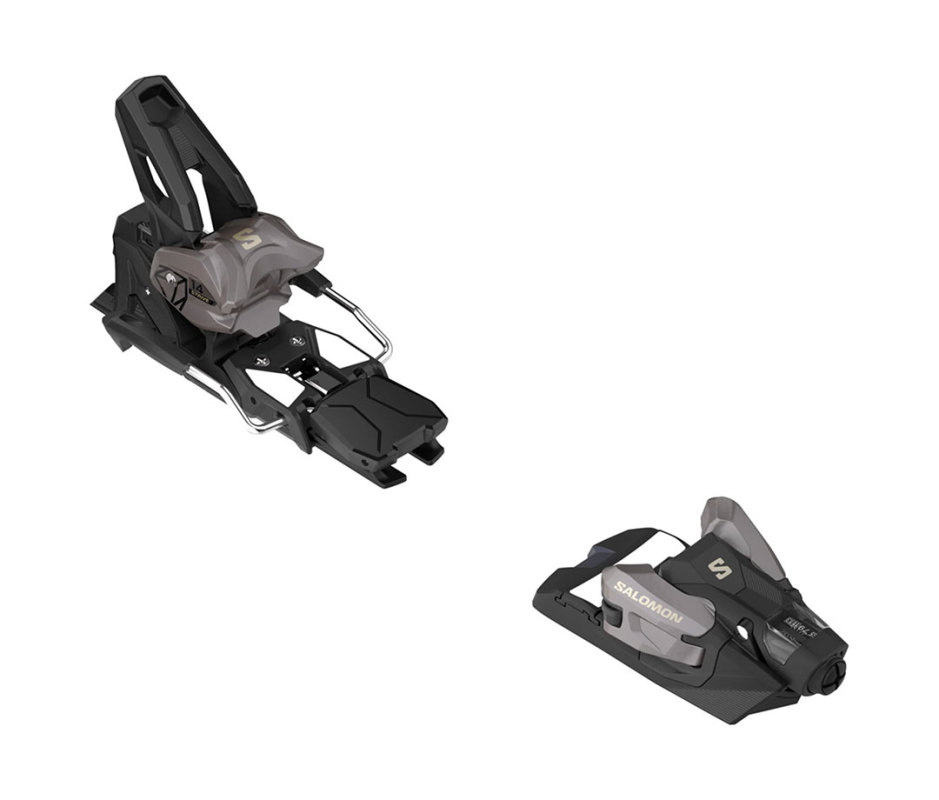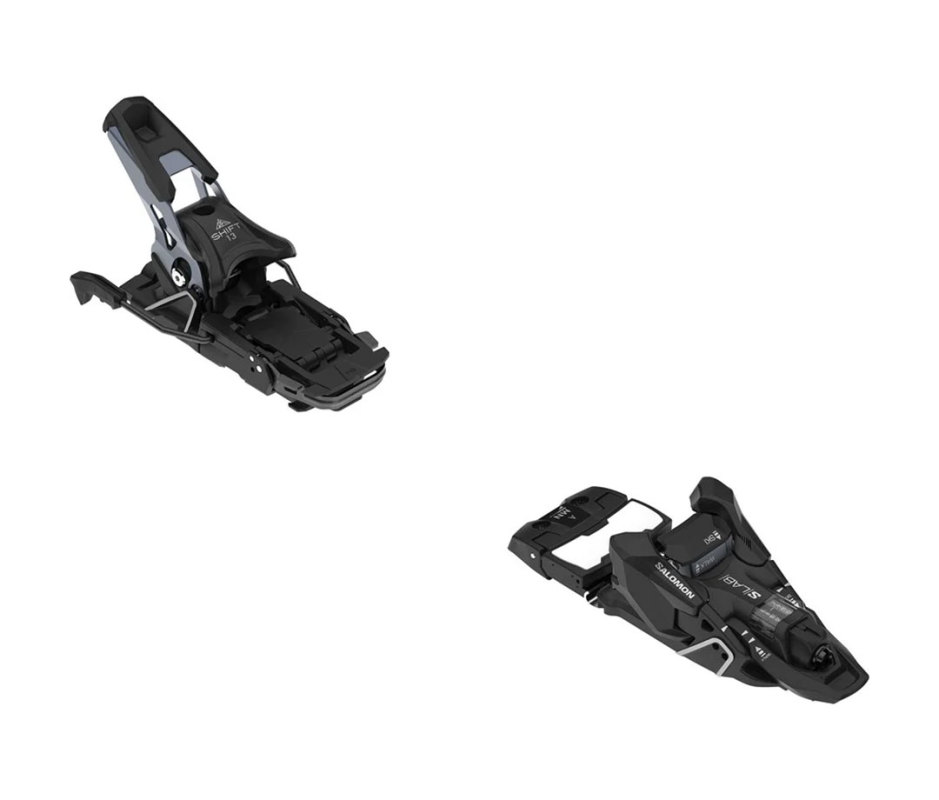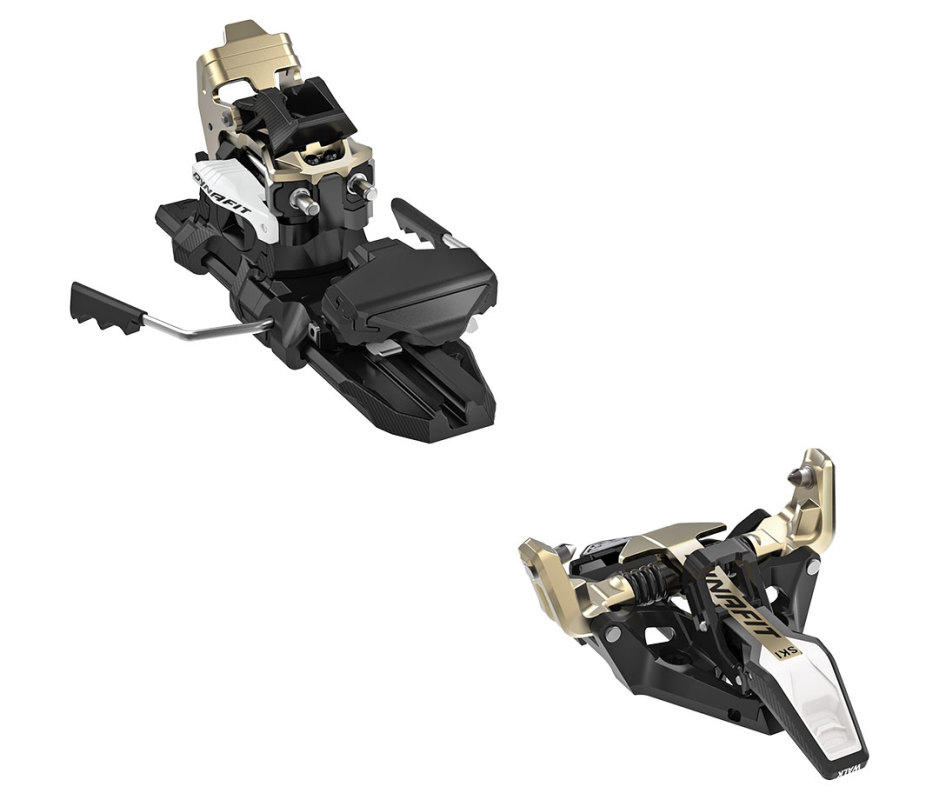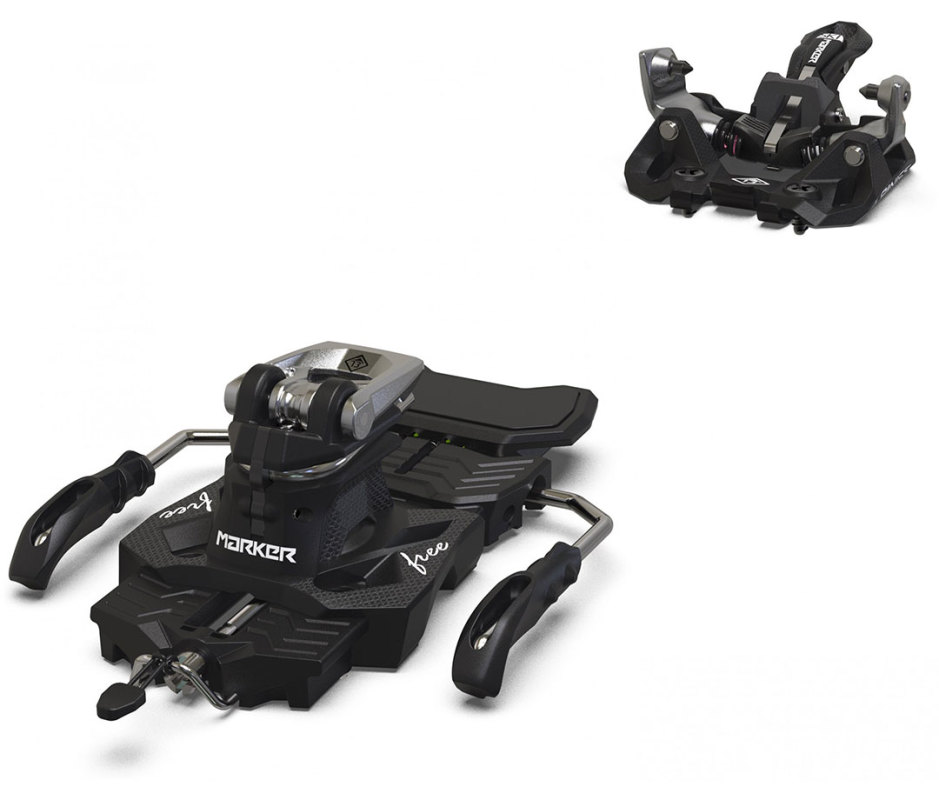No products in the cart.
Fitness Tips
These Ski Bindings Will Keep You Safely Stoked on the Slopes
Ski bindings may not be as sexy as those sleek boards or perfect boots, but they’re the unsung heroes of your ski kit. While a phenomenal pair of skis or the perfect ski jacket may make feel like a mountain god, it’s your bindings that are the true titans of the best day on the slopes, whether it’s on the groomers at a resort or deep in the backcountry.
More than just hardware, bindings are marvels of engineering that keep your ski boots locked in while you’re knee deep in powder—and release you when things go sideways (or upside down). Set them right, and you’re avoiding those dreaded knee blowouts or the infamous tib-fib fracture.
Related: I’ve Skied Everywhere, and This Is the Wildest Spring Skiing on the Planet
Bindings efficiently transfer power from your boots to your skis, making the difference between sloppy skids and crisp carves. They’re essential for controlling your speed, turns, and stops. Have no doubt—the right binding can dramatically impact your ski experience. While no binding, however high-tech, can promise a zero-risk ride, it’s a far better calculated risk with reliably good ones. Read on for our 6 favorite pairs of ski bindings for 2025. For the rest of the whole package, check out our favorite all-time skis, ski pants and bibs, après ski items, and more.
Men’s Journal aims to feature only the best products and services. We update when possible, but deals expire and prices can change. If you buy something via one of our links, we may earn a commission.
Best Ski Bindings of 2025 at a Glance
- Best Durability and Dependability: Cast Freetour 2.0 Pivot 15 Ski Binding
- Best Alpine Ski Experience: Strive GW 14 Ski Binding
- Most Versatile: S/LAB Shift 2 Ski Binding
- Best for No-Nonsense Simplicity: Dynafit Ridge Ski Binding
- Best Lightweight Touring Binding: Marker Alpinist Free 13 Ski Binding
- Best Knee Protection Technology: Tyrolia Protector PPR 13 GW SET Alpine Bindings
Best Ski Bindings of 2025
Best Durability and Dependability: Cast Freetour 2.0 Pivot 15
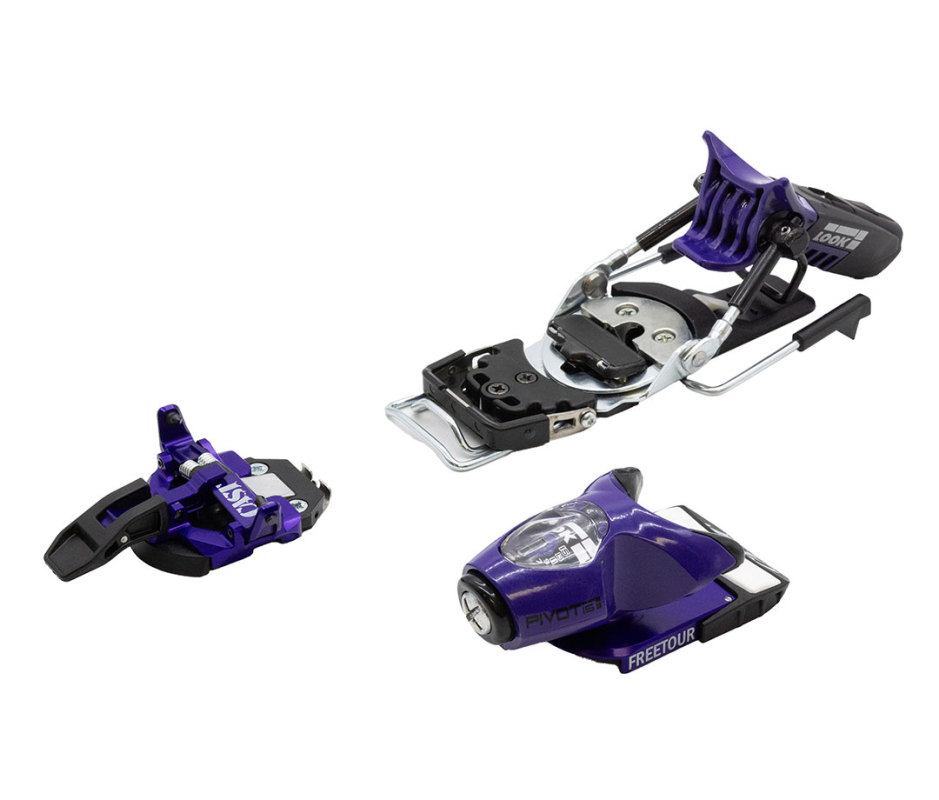
Courtesy image
The Freetour 2.0 enhances the groundbreaking design of its predecessor, the Freetour 1.0. It caters to big mountain skiers who want a lightweight pin binding that excels in uphill travel and an alpine-oriented toe for downhill performance. The Freetour 1.0 is designed to pair seamlessly with the LOOK Pivot binding, which offers exceptional elasticity, effectively absorbing vibrations during turns on rough terrain. Unlike traditional tech bindings, the LOOK Pivot toe has the reliable release of alpine bindings and adheres to DIN norms. For uphill travel, you use the lightweight tech toe (testers found the transition between the toe pieces seamless). Weighing just 1,340g in alpine mode and 1,000g for touring, the binding has an AFD (Anti-Friction Device) toe plate that supports both Alpine and GripWalk norms.
One notable upgrade in the Freetour 2.0 is the simplified mounting process, transitioning from four toe screw towers to a single base plate, significantly improving user-friendliness. With a DIN range of 6 to 15, it accommodates everyone from novices to seasoned pros. The elastic travel is impressive, with 45mm at the toe and 28mm at the heel, enhancing both safety and durability. Additionally, there’s a crampon clip compatible with Dynafit Crampons, and climbing risers with 0-, 8-, and 12-degree options.
Best Alpine Ski Experience: Strive GW 14
Courtesy image
The Strive GW 14 ski bindings are all about upping your downhill ski game to the next level. With an ultra-low-profile toe piece, these bindings create a low center of gravity that maximizes your power, control, and response. Testers felt the bindings increased their confidence and ability to carve precision turns.
An extra-wide toe pedal offers significant lateral power transfer, meaning better stability and sharper, more controlled turns. Whether you’re cruising down groomers or hitting steep off-piste lines, the Strive 14 feel responsive and secure. The XL wings in the toe provide solid boot grip, and the low-profile chassis doesn’t hold back with real-time terrain feedback. The sliding toe pedal and +elastic travel minimizes the risk of pre-release, so you can focus on shredding.
Testers deemed the Strive 14 “light and tough.” It’s also GripWalk compatible, so you can wear boots with higher friction soles that are less likely to slip in the icy parking lot or when traversing dicey rock bands to reach that untracked slope. At just 980g per binding with a DIN range of 5-14, these are built for intermediate to advanced skiers who crave power, precision, and pure mountain fun.
Most Versatile: S/LAB Shift 2 Binding
Courtesy image
The new S/LAB Shift 2 bindings are arguably the most anticipated release of the season, and we found that they live up to the hype. The Shift 2 is ideal if you’re juggling resort laps with backcountry missions. Building on the strengths of the original 1.0 version, the Shift 2 was our testers’ top pick for its simple transitions and rock-solid feel. Weighing in at 920 grams, it’s just a smidge heavier than its predecessor, but it packs a punch with an improved locking mechanism for the brakes and a completely redesigned Power Block adjustable AFD plate—no more unthreading and or pre-release. With shock absorption, elasticity, and dampening comparable to standard alpine bindings, this beauty is not only perfect for uphill travel but also ready to tackle all the epic big mountain runs our testers threw at it, many times involving windblown crust, icy moguls, powder glades, tight couloirs, and short cliff hucks.
The new Power Block AFD is a big deal. The height-adjustable aluminum insert enhances lateral stiffness by 30 percent, and testers reported that the improvement translated into a much better interface with rapidly changing terrain and snow conditions. Additionally, XL wings wrap snugly around the boot tips, instilling confidence for turns and enhancing power transmission. As one tester noted after pushing the SHIFT² in the French backcountry ski meccas of La Grave and Chamonix, “I felt secure on steep, icy descents, especially when hitting those windblown compressions that threaten to pop off a ski.” They also liked the no-nonsense single heel rise for climbing. It’s easy to engage with your pole, and there’s no second guessing about what height of riser you need.
Best for No-Nonsense Simplicity: Dynafit Ridge Ski Binding
Courtesy image
Dynafit has been perfecting pin bindings for 40 years, and the Dynafit Ridge is a testament to that expertise. Designed for ambitious skimo athletes who thrive on long tours followed by fast, steep descents, the Ridge weighs in at just 410 grams, so you don’t feel weighed down during your climbs—but with good control on the way down.
What pleasantly surprised us was how straightforward the Ridge is to use. Say goodbye to the fiddling that often comes with many pin bindings. Testers particularly appreciated the wide front Titanal toe stopper, which ensures you find the perfect boot position every time, eliminating the frustrating energy loss that comes from misaligned pins. With its wide tension fork and Step-In Side Towers, locking in is both precise and simple. The Easy Turn Tech heel unit lets you switch seamlessly from climbing to downhill mode. You just unlock the side wings and spin it around.
When it comes to descending, the Ridge binding impresses with its power transfer and stability, with adjustable lateral and vertical release values ranging from DIN 4 to 12. Plus, it features a patented brake that automatically engages in downhill mode and retracts smoothly for climbing. Adjusting riser heights and attaching ski crampons is also easy, making the Ridge an excellent binding for newcomers to touring, as well as seasoned veterans.
Best Lightweight Touring Binding: Marker Alpinist Free Ski Binding
Courtesy image
Weighing just 395 grams (about 14 ounces) and featuring a DIN range of 6 to 13, Marker’s Alpinist Free bindings are engineered for optimal performance while remaining lightweight. “I was worried that they were too light, but they exceed expectations in ease of use, control, and security,” said one tester. “Perfect for long ascents and unpredictable descents.” The Alpinist Free boasts a wider base area for enhanced ski performance, making it a top choice for those who want to shred while shedding weight. A wide drilling pattern ensures excellent force transmission to the edges, while active length compensation maintains performance and flex on uneven terrain. Marker’s design prioritizes aggressive skiing, featuring an oversized profile in both the toe and heel, along with a Performance Booster (freeride spacer) that connects you directly to your skis, empowering you to tackle variable conditions with confidence.
This version of the Alpinist Free combines the Alpinist heel piece with a super rigid, carbon-reinforced ISI toe piece, making step-ins intuitive and hassle-free. “The pins snapped into my boot easily, even in low visibility and heavy snow conditions that typically complicate transitions,” noted one tester. With a full 35mm adjustment range, the heel piece accommodated every boot we tested. The 0-, 5-, and 9-degree climbing aids are easy to deploy, and the Alpinist Free is crafted from recycled and bio-based plastics.
Best Knee Protection Technology: Tyrolia Protector PPR 13 GW SET Alpine Bindings
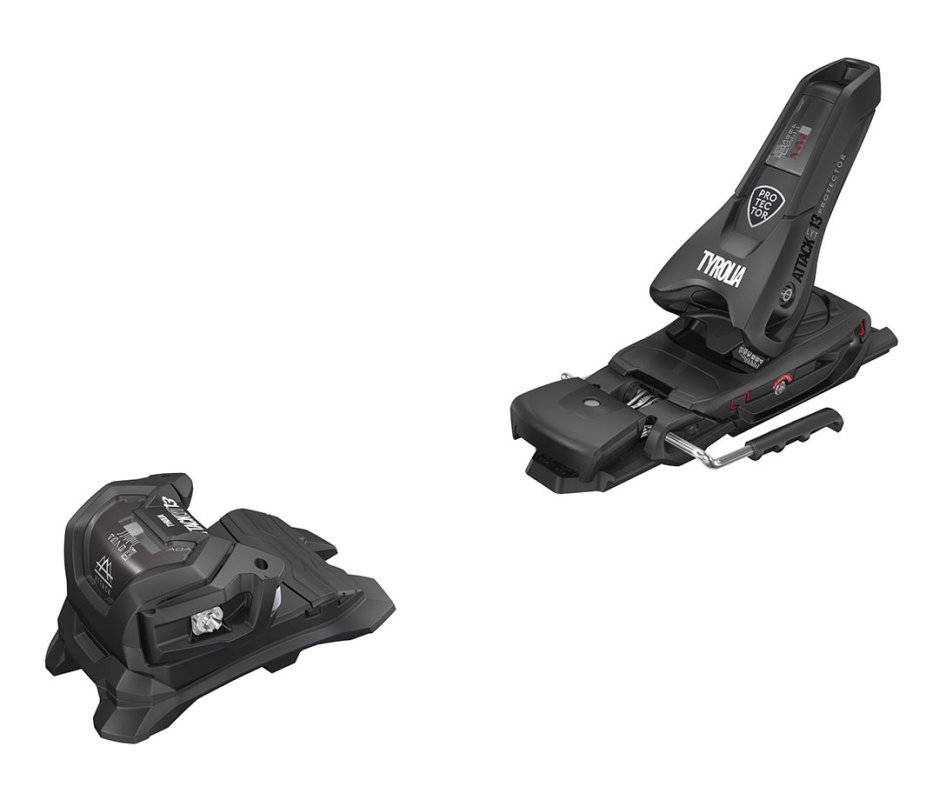
Courtesy image
The Protector PR 13 GW SET binding is engineered with knee protection at its core. Our test team—beginners and long-time racers alike—loved them for their versatility. They’re full-on alpine bindings—downhill only, hence no touring mode—but if you ski resorts, they are the ticket to years of fun. Featuring innovative Full Heel Release (FHR) technology, these bindings aim to reduce strain on your knees while skiing. This is a hard thing to test, but none of our team experienced any falls where the bindings pre-released or failed to release.
The 180 dgree heel release is designed to alleviate pressure during both forward and backward twists, potentially cutting ACL strain by over 50 percent. This is especially beneficial if you catch an edge while racing down groomed runs. A Full Diagonal Toe system ensures a reliable release in any direction, keeping you secure on the slopes. Additionally, the TRP Toe System, with its four rollers, provides a snug fit while minimizing joint stress. With a stand height of 33.5mm, a DIN range of 4 to 13, and a lightweight build of just 1,185 grams, these bindings strike an ideal balance between agility and robustness—perfect for any terrain.
Related: You Need to Try These 7 Essential Travel Hacks Before Your Next Ski Trip
A Quick History of Ski Bindings
In the early days, skiers lashed their boots to skis with leather straps—ideal for Nordic gliding but not exactly high performance (or safe). Fast-forward to the 1950s, and the alpine scene changed with the invention of toe and heel pieces for better stability. The 1960s revolutionized safety with release mechanisms, laying the foundation for the DIN standard we rely on today. By the ’70s and ’80s, the ski world exploded with styles, and bindings adapted to every type of skiing—downhill (alpine), freestyle, telemark, alpine touring, and super-lightweight backcountry use. Today’s skier has many options. The trick is figuring out which fits your needs the best.
What’s Your Ski Style for the Best Bindings?
Bindings come in different styles and configurations depending on what kind of skiing you’re into. Whether you’re sticking to the resort or craving some uphill-touring adventure, you need bindings that match your mission. Some are strictly for downhill, while others handle both the ascent and the descent. There are pin bindings, hybrid bindings, and strictly alpine bindings. Each binding has some type of brake that saves your ski from shooting off into the hinterland or (worse) hitting another skier. Pro tip: make sure your brake fits your ski’s width. There’s a little wiggle room, but getting the right size is key.
Once you’ve picked out the right bindings, make sure they’re properly mounted onto your skis. Unless you have some training, your local ski shop is the best place to handle this. They’ll mount the bindings at the right point on your skis and adjust the toe and heel pieces to perfectly fit your boot, height, weight, and skiing ability. They’ll also look at your boots and make sure the soles are compatible with the bindings you choose.
Understanding DIN: Your Best Friend on the Slopes
Always double check your DIN, whether it’s on a rental ski, or from season to season with your own gear. DIN stands for “Deutsches Institut für Normung” (basically, the German Institute for Standardization), and it controls how easily your bindings release your boots under pressure. The higher the DIN, the more force is needed to release—which is perfect for heavier or more aggressive skiers. Lighter or less experienced skiers can go for a lower DIN. The sweet spot depends on your weight, height, skill level, and type of skiing you’re doing. While most bindings have an easy-to-read DIN scale, it’s always smart to have a pro dial it in for you.
Binding Maintenance
At the start of each season—and periodically throughout—check that your bindings are set correctly and that the moving parts are working smoothly. Pay attention to how the binding fits your boot when you click in. If anything feels too loose or too tight, have them checked by a professional. You don’t want them releasing during a normal turn, stop, or park trick—nor staying locked when they should release in a fall.
Related: Powder Paradise: Snowcat Skiing at Colorado’s Purgatory Resort
Our Testing Process: Why You Should Trust Us
Our team of nine testers knows how to do their homework. Collectively, we’ll rack up more than 1,000 on-snow days in a given season just testing out skis and gear to see if they live up to their promise. Most of us have been testing skis for over 20 ski seasons. We’ve skied New England and Eastern Canadian hardpack, Whistler powder, Pacific Northwest cement, and everything in between, including months in the French, Italian, and Swiss Alps.
Our testers have visited more than two dozen ski resorts in every condition imaginable, and skied plenty of peaks, steep slopes, and couloirs. We offer a combined ski history of more than 100 years of high-level race and big-mountain experience racked up from Japan to North America to the Alps.
We love reviewing skis, and have tested more than 300 pairs of them. We harnessed not only ambition, but wisdom and experience, with testers from their early 20s to seasoned vets. We also tested some skis on less experienced legs to assess how they performed for beginner and intermediate skiers. It’s never easy putting so many great skis through their paces before whittling them down to our favorite dozen pairs of top performers—but it’s always a ton of fun.
Source link


